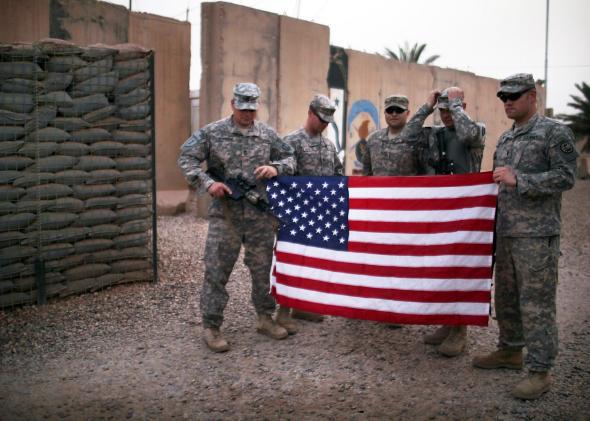This article originally appeared in Business Insider.
U.S. airstrikes on Islamic State positions have begun. Fighter jets also bombed Islamic State militants in northwest Iraq on Thursday night. But it’s not clear who the pilots were.
The Pentagon immediately denied a New York Times report that the U.S. carried out Thursday’s strikes. Iraqi military officials told CNN and the Wall Street Journal that the Iraqi Air Force had struck ISIS targets near Erbil, which is the regional capital of Iraqi Kurdistan and host to hundreds of U.S. military advisers.
The Iraqi Air Force is poorly equipped, consisting of several Cessna planes carrying American-supplied Hellfire missiles, some American- and Russian-supplied helicopters, and Russian-made Su-25 aircraft.
Last month a Pentagon official told the Hill that the U.S. believed Iranian pilots were in the air in Iraq while denying that Russian personnel were operating in the area. But diplomatic sources told the Daily Beast that “Russian pilots will fly the planes due to a lack of Iraqi pilots with the proper training.”
(Fittingly, geopolitical expert Ian Bremmer of the Eurasia group told Bloomberg TV this morning that the U.S. was “fighting shoulder-to-shoulder, as it were, with the Russians and the Iranians.”)
Garrett Khoury, the director of research at The Eastern Project, explained that the Iraqi Air Force “recently acquired around a dozen SU-25 ground attack aircraft from Russia (with more possibly coming from Belarus) … [which] give them the ability to conduct serious ground-support operations.
Thursday’s attack came two days after Iraqi jets struck an ISIS convoy near the northern city of Mosul.
“[The Su-25s] are Russian jets bearing Iraqi insignia, but possibly piloted by Russians,” Khoury continued. “Iraq did use the SU-25 during the Saddam Hussein era, and there are probably former Iraqi pilots who flew them, but it has been at best 12 years since any Iraqi pilot got any significant flying time with the plane.”
So who bombed ISIS on Thursday night?
The most probable answer is Iraqi Su-25s, manned by Russian or Iranians—or maybe Iraqis.
“The Iraqi government was just as quick to take credit for the strikes as other governments were to deny their involvement, and so, combined with the fact that the IAF can launch such operations, it actually looks like they managed to do it on their own,” Khoury told BI.
In any case, Iraq’s skies are crowded. A former high-ranking CIA official in Baghdad told Jeff Stein of Newsweek that Turkish jets carried out the airstrikes. “There’s no question about it,” he said, adding that “certainly we are giving them targeting data.”
Stein notes that Turkish F-16s were reportedly patrolling the skies over the area near Sinjar in northern Iraq, where about 50,000 Yezidis are starving after fleeing ISIS militants.
“Iran has used its own Air Force to attack ISIS since the beginning of the group’s offensive, but mostly to keep them away from the Iranian border,” Khoury said. “Syria has likewise conducted air strikes on ISIS targets on the Iraqi side of their shared border.”
Even U.S. President Barack Obama, while announcing the authorization of airstrikes and humanitarian aid in Iraq, allowed for ambiguity about Thursday night’s strike. In any case, ISIS is now getting hit from the sky to push it back from Iraqi Kurdistan. Iraqi Air Force Commander Lt. General Anwar Amin told WSJ that Iraqi forces and American advisers were coordinating in joint command centers in Baghdad and Erbil as the Kurds continue to fight on the ground.
See Also: The Paradox in Fighting ISIS
